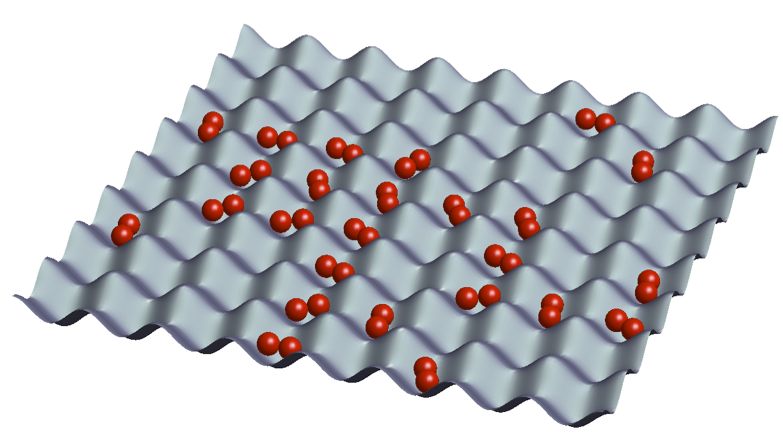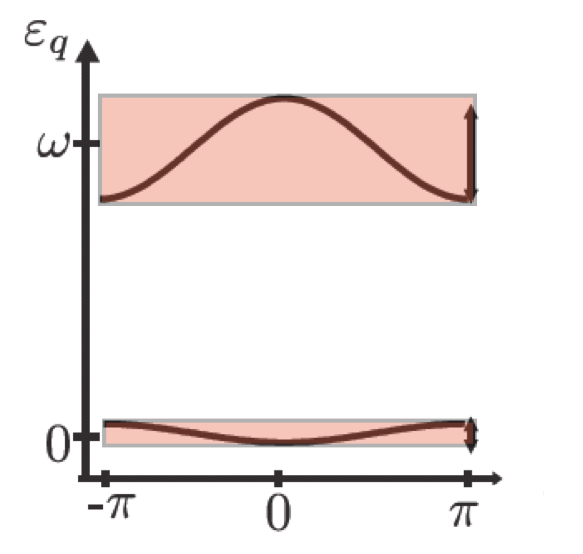Realisation of a Metastable Mott-Insulator
A particularly interesting aspect of the dynamics of cold atomic and molecular gases in optical lattice potentials is that the system is very well isolated from its environment. In contrast, e.g., to electrons moving in a solid crystal, the atoms cannot absorb and emit energy as phonons (vibrations) in the lattice, and the energy of the gas stays constant over long timescales. As a result, it is possible to create long-lived states that are often highly counter-intuitive.

The first example of this was a gas of repulsively bound atom pairs, which was realised in an experiment in Innsbruck in 2006 [K. Winkler, G. Thalhammer, F. Lang, R. Grimm and J. Hecker Denschlag, A. J. Daley, A. Kantian, H. P. Büchler and P. Zoller, Repulsively bound atom pairs in an optical lattice, Nature 441, 853 (2006). (cond-mat/0605196)]. These are atoms that stayed together as pairs in an optical lattice because they had a strong repulsive interaction, and had no channel into which they could deposit their interaction energy if they split up. So, unlike most standard particle pairs or molecules, which stay bound together because they have attractive interactions, these are repulsively bound pairs.

As a technical note, it is also important in this system that the atoms are in an optical lattice potential. Normally if repulsively interacting atoms (or any other kind of repulsively interacting particles) are placed together, they can separate by converting their interaction energy into kinetic energy. However, in the lattice the kinetic energy is only allowed to fall in particular ranges (called energy bands), as shown in the picture on the right. As a result, it is normally not possible for the interaction energy to be converted to kinetic energy, and the only choice is for the atoms to stay together. Such a structure with energy falling into bands is a fundamental feature of lattice physics in quantum mechanics.
A similar effect occurs in the metastable Mott Insulator. Normally a Mott Insulator (as depicted on the right) is formed when there are an equal number of particles and lattice sites, and repulsive interactions between particles are so large that the most energetically favourable state is that where the particles arrange themselves with one per lattice site.  In this state, the particles are essentially pinned by the repulsive interactions and cannot move through the lattice (hence they are referred to as an "insulator"). In the recently realised metastable Mott Insulator, the same effect can occur, but due to attractive interactions. The particles are pinned, because if they hop onto the same site, they would have to lower the energy of the system, and there is nowhere where they can give up this energy. Thus, they remain localised on their own sites.
In this state, the particles are essentially pinned by the repulsive interactions and cannot move through the lattice (hence they are referred to as an "insulator"). In the recently realised metastable Mott Insulator, the same effect can occur, but due to attractive interactions. The particles are pinned, because if they hop onto the same site, they would have to lower the energy of the system, and there is nowhere where they can give up this energy. Thus, they remain localised on their own sites.
Realisation of such metastable states is of fundamental interest due to their counter-intuitive nature and roots in quantum mechanics. On a practical level, the possibility to realise these states and examine their stability is an important step towards characterising quantum simulators, which can then be used to bring insight into many other exotic systems, potentially including materials such as high-temperature superconductors.